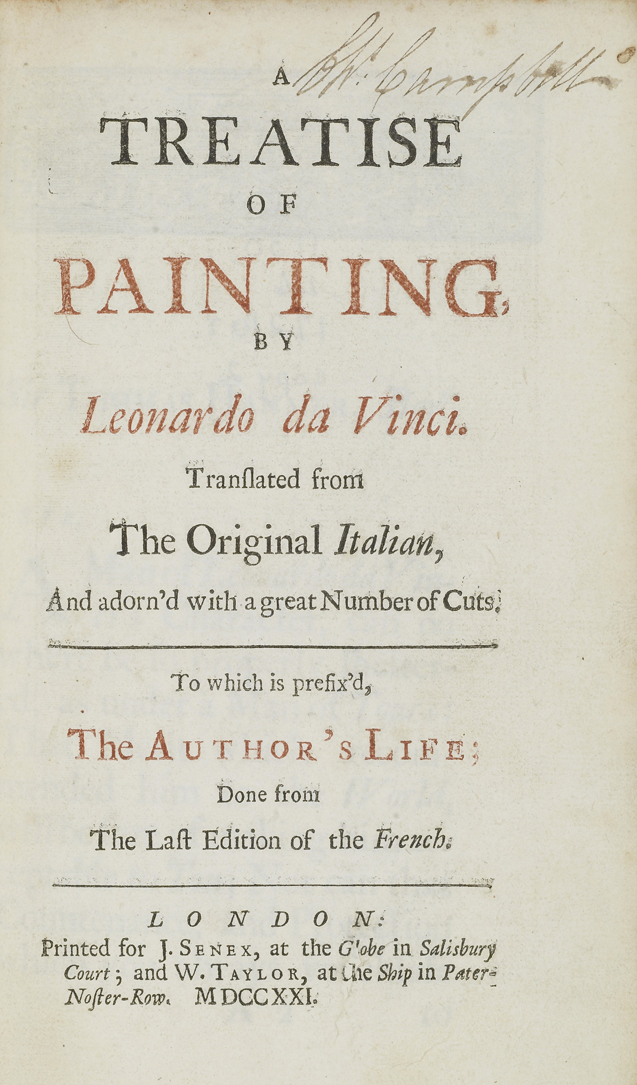
A Treatise on Painting, by Leonardo da Vinci
1721
Senex and Taylor, London
Illustrations:  | Chapter Display  |
I304
The Reflex will be the most bright and vivid, in that part which receives its light between the most equal Angles; for Example, suppose N the Center of Light [Tab. 1. Fig. 5.] and A B the enlightened part of the Body A B C F E D, from whence the Light is reflected all around the shadow'd Concavity of the same Body; suppose likewise, the Light reflected on E to have been transmitted between equal Angles, or Angles nearly so: In this Case the Reflex E will not have Angles so equal at the base, as the Reflex F; as may be easily seen from the great inequality between the Angles E A B and E B A: Thus the Point F will receive more Light than the Point E, and the Reflex F will be brighter than the Reflex E, since, though the Angles F and E have the same base, yet the Angles opposite to the Point F, approach nearer to an equality, than those opposite to the Point E. Further, the Point F, by the Rules of Perspective, must be more enlightned than the Point E, because it is nearer the Luminous Body A B, whence they receive their Light.